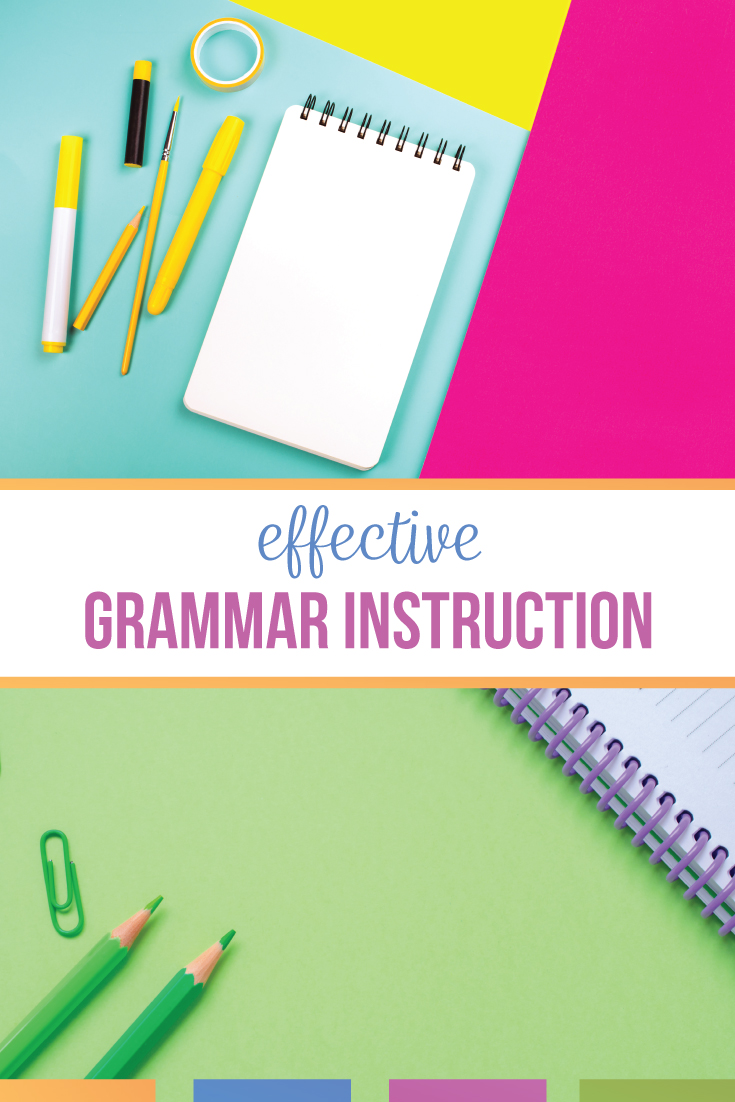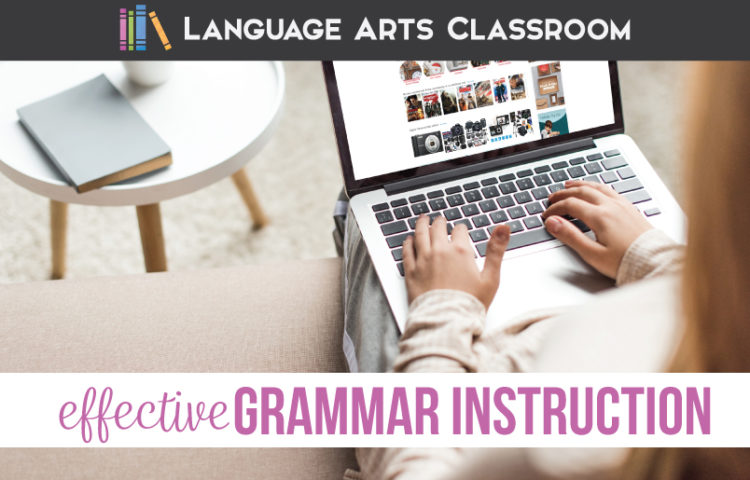Through teaching, I’ve found ways to create meaningful, effective grammar instruction. If you’re asking yourself what makes a good grammar lesson, continue reading.
People have strong feelings about grammar. Some ELA teachers loathe the study of language’s structure, and others dive excitedly into lessons… with every type of teacher between. Over the years, I have tried a variety of methods and approaches for teaching grammar. Hopefully, no matter how you feel about grammar, my ideas will help you with grammar lessons to help your students.
From trial and error, I know that grammar lessons should not be an afterthought. They can’t meaningfully be covered in ten minutes and then quit. Strong grammar lessons, much like effective public speaking, literature, or writing lessons, take much more.
When reflecting on successful grammar lessons, I’ve found that overall, effective grammar instruction includes three components: direct instruction, connections to other class components, and various learning opportunities. Grammar lessons to help your students are within your reach.

Direct Instruction
Understanding grammar takes work. That work takes time and repetition. I know that in education, these can be unpopular ideas.
Alone, I agree! Returning to “drilling” students is a terrible idea. I’m not advocating that direct instruction be the only or primary way of teaching grammar. However, students may need to practice identification of grammatical constructs and errors before they manipulate words and achieve those higher thinking skills.
When I review theme or plot structure, we cover the definitions and the intricacies. When students are stuck, we think of previous lessons to activate prior knowledge.
Similarly, when I teach linking verbs, I review the functions of linking verbs in relation to predicate adjectives, or I list linking verbs with students. We might write some sentences together. Direct instruction is part of a good grammar lesson.
Students will need to memorize linking verbs, prepositions, and basic definitions. Understanding the foundation of language, the very basics, can lead to deeper learning later. Just as a teacher explains text structures for nonfiction lessons, definitions and lists are part of lessons.
As students lay this foundation, you will then be able to build upon it with other lessons.
Connections
Connect grammar concepts to the rest of class. Grammar lessons to help your students won’t end with the initial discussion. Perhaps during a read-aloud or while studying poetry, I will comment on a unique word use. That word is normally a verb… but now it is a noun. As students write, we will discuss if changing an independent clause to a dependent clause (creating a complex sentence) would provide a suitable transition or if a series of simple sentences would be more effective.
When you naturally pause to teach a literary device, think of a grammatical component would fit into the lesson. You might be able to tie grammar into areas you have never considered.
As you become familiar with teaching grammar, you will naturally highlight grammatical components. If you’re nervous to add a connection component to your effective grammar instruction, plan ahead. Find unique sentence structure or an interesting verb choice. Make the connection for students, and mention it the next time you discuss that grammar topic.
Various practice opportunities
Nothing in an ELA course should begin and end with a basic worksheet, and grammar is the same. Effective grammar instruction will not simply include a presentation, a worksheet, and then a quiz; it will branch.
Ask students to “build” sentences with sticky notes or note cards. Have them display different sentence components as they build. For older students, ask them to discover interesting phrases or sentence types as they read. Compile a collage together and reflect on what students know.
The truth is… students already know some components of grammar. We can review domain-specific vocabulary in fun ways. The way we teachers build upon that knowledge, that foundation, can provide a unique perspective for students as they grow as learners.
What does effective grammar instruction look like? Mostly, it appears the same as other ELA lessons. A bit of direct instruction, application to real life and to other class components, and plenty of practice opportunities. Soon, you too will be teaching effective grammar lessons in your ELA classroom.

